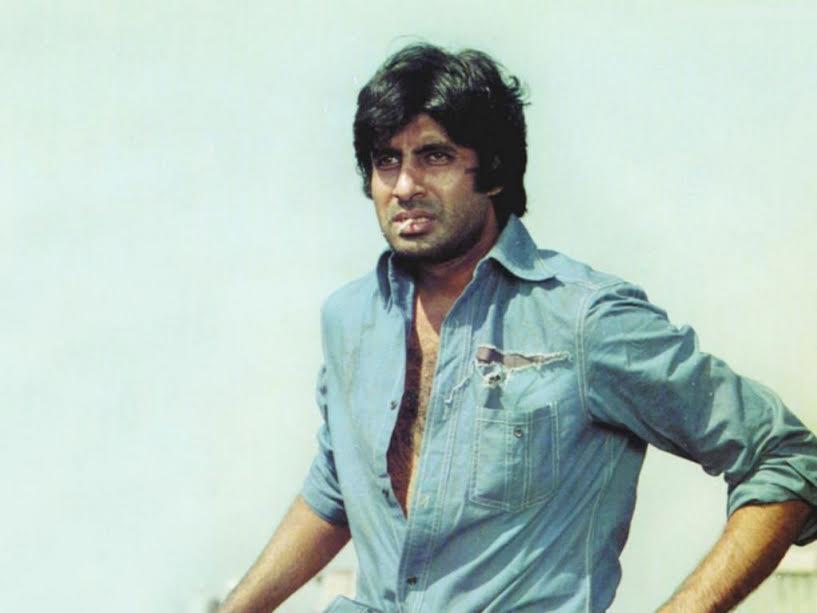 image
image
Bollywood heroes: Times are a-changing
From depicting romance to anger and then to the raging revenge of the don, the Bollywood hero has changed over time. This is also because of changing values and circumstances, analyses Shoma A. Chatterji
Time was when women would swoon over every crinkle of Rajesh Khanna’s eyes and his lip-synching of romantic songs. Then came the angry young man Amitabh Bachchan to be followed by gangster protagonists.
The changing face the Bollywood hero, at least that caught the eyeballs, has happened not only because values began to change with the pressures of materialistic aspirations, the lust to make a fast buck within the shortest time possible, but also because there was a time when the underworld funded films in Bollywood, directly or subtly, dictated the norms of the story and the script.
In retrospect, the metamorphosis from idyllic screen romance then to the angry young crusader out to right all the wrongs in the society, and to the underworld don a perceived victim of circumstances seems almost in the natural order of things. Though the protagonist as gangster possessed the classic characters of the villain, the audience tended to develop an ambiguous stance towards him. Instead of being angry with him, the audience admired the grit and the courage with which the mafia hero set out to realise his dreams of making it from rags to riches, never mind the graphic violence and bloodshed the screen was bathed in.
This is a bit of a reversal of the box office formula of the ‘happily ever after’ ending because one pre-supposes that the gangster hero would meet with a violent death in the end, anyway. Yet, films like Parinda, Vaastav, Sathya, Company, Once Upon a Time in Mumbai and Gangs of Wasseypur (Parts I and II) have had excellent runs at the box office. While the end justifies the ‘crime never pays’ theory, the narrative goes against this because it does pay till the protagonist is trapped in a spidery web of his own making and cannot come out of it.
This ambivalence in the audience is a reflection of the basic contradiction in the Indian mindset today, caught between the horns of a dilemma of whether to go the straight way to succeed in life or to take a short cut through crime and reach there fast. The hero does not think he is doing any wrong because he often has a ‘sad story’ to rationalise his misdeeds. Does “success” translate into ethics, hard work and moral integrity? Or does it really mean financial success and the power that this brings where the means adopted to gain such riches does not matter?
.jpg) Ram Gopal Verma laid the foundation of the gangster-heroes with Sathya (1998). The film tracks a young man who comes to Mumbai in search of a job. A series of events pulls him unwittingly into the underworld. An impressive screenplay, fine camera work, good editiong, remarkable performances and a realistic portrayal of the underworld made it a stand-out film. In the process it gave birth to a new genre of film that came to be known as the Mumbai noir.
Ram Gopal Verma laid the foundation of the gangster-heroes with Sathya (1998). The film tracks a young man who comes to Mumbai in search of a job. A series of events pulls him unwittingly into the underworld. An impressive screenplay, fine camera work, good editiong, remarkable performances and a realistic portrayal of the underworld made it a stand-out film. In the process it gave birth to a new genre of film that came to be known as the Mumbai noir.
The Bollywood gangster film might have taken Hollywood as its inspiration but veered away in treatment, style and approach in a way created the Bollywood gangster hero. Fran Mason in his study of gangster films in America writes: “During the 1970s the iconography, narrative structures, and ideological or cultural parameters of the gangster film were established as part of critical methodology, very often alongside or in contrast to the Western, because of shared concerns with individuality, masculinity, and social concerns.”
In Hollywood, gangster films evolve around the sinister actions of criminals or gangsters, particularly bank robbers, underworld figures, traffickers of arms, women and drugs, or ruthless hoodlums who operate outside the law, stealing and violently murdering their way through life.
He is usually a materialistic, street-smart, immoral, megalomaniac and while destroying others, some his juniors and peers and some his foes, becomes self-destructive, sadistic and masochistic.
Bollywood has changed this theory to construct its own. The gangster-hero in films like Sathya, Once Upon a Time in Mumbai and Vaastav are portrayed as victims of circumstances. They became gangsters and subsequently turned leaders of their own gang, holding their fiefdom under persistent threat to life and property of innocent people only to end up being killed by the very powers-that-be that used them to fight their own battles as front men and soldiers-in-reverse. He is basically a kind-hearted guy who lives in a family setting, helps the poor in his neighbourhood and generally lives in a slum. The script fleshes him out in such a way that the audience begins to empathise with him, feels sorry that he dies in the end.
A brilliant example of the true-blood gangster film Gangs of Wasseypur I and II. This two-part film that uses as much graphic violence as sex and adultery set a new benchmark for gangster films. The films focussed on the coal mafia of Dhanbad and got wonderful reviews. Telling the story of war between criminal dynasties, Anurag Kashyap’s gripping narrative and thrilling plot dynamics took the gangster film to a different level altogether. It was a box office hit , of course, and won many awards in the film festival circuit.
Having said this, one nagging question remains – what does it say about audience taste today? Would we cry for the young and dashing Sooraj of Aradhana or the angry Vijay of Deewar or, would we rather wince at the terrible blood and gore Raghunath splatters in Vaastav – The Reality or Sathya does in Sathya?
(Shoma A. Chatterji is an award-winning film critic)
Top Headlines
-
Entertainment
Valentyn Vasyanovychs To The Victory! wins 2025 TIFF Platform Award unanimously
September 26, 2025
-
Entertainment
Chlo Zhaos Hamnet Wins TIFF 2025 Peoples Choice Award
September 20, 2025
-
Entertainment
Sholay: Golden even after fifty years
July 04, 2025
-
Entertainment
War 2: Check out Hrithik Roshan, Jr NTR and Kiara Advani's new posters
June 26, 2025
-
Entertainment
LGBTQIA+: Icelandic film Odd Fish and Brazil's Baby win big at KASHISH 2025 film festival
June 12, 2025
-
Entertainment
Katrina Kaif named Maldives tourism global brand ambassador ahead of Modi's visit
June 10, 2025
-
Entertainment
'Queen marches to conquer': Deepika Padukone joins Atlee's AA22xA6 starring Allu Arjun after 'Spirit' exit
June 08, 2025
-
Entertainment
Dakota Johnson and Chris Martin, who were in on-and-off relationship, broke up: Reports
June 06, 2025
-
Entertainment
Sharmila Tagore to Alia Bhatt, India weaves cross-generational tale at Cannes 2025
May 28, 2025
-
Entertainment
Is Sandeep Reddy Vanga's cryptic 'feminism' post meant for Deepika Padukone? Neitzens think so
May 27, 2025


